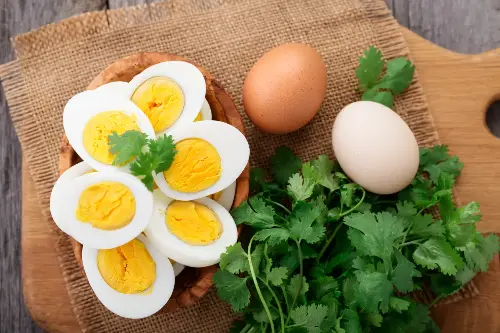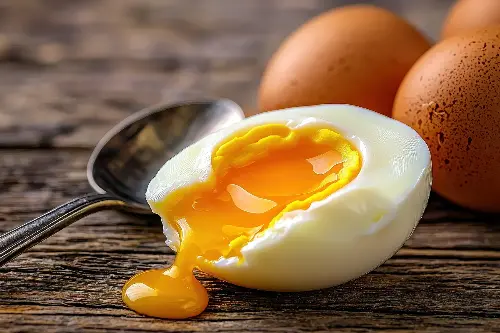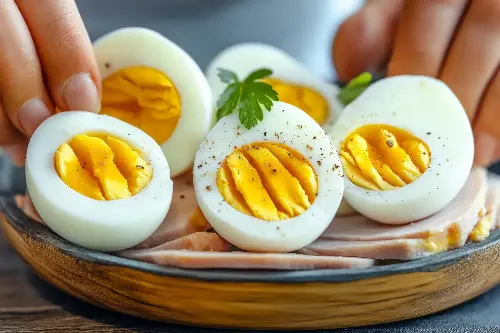There's something magical about the seemingly simple act of boiling an egg. It's an essential kitchen skill that can transform a humble egg into a versatile ingredient: from breakfast staple to sandwich filler or salad topper. However, achieving the perfect boil, whether you're yearning for a runny yolk or a robust hard boil, requires a touch of know-how.

Understanding Egg Freshness
Before we dive into the boiling process, let's spare a moment for the eggs themselves. Freshness is a key factor that influences the end result. Fresh eggs, while delicious for most purposes, can be trickier to peel when hard-boiled. This is because the pH levels of fresh eggs are lower, causing them to bind more significantly to the shell's inner membrane. As eggs age, the pH level rises, and the binding relaxes, making the peeling process a breeze. If your objective is to create eggs that peel effortlessly, consider using eggs that have been in the fridge for a week or so.
Soft-Boiled Eggs: A Runny Revelation

Soft-boiled eggs are a delight for those who love dipping toast soldiers into a golden pool of liquid yolk. Achieving this requires precision, as overcooking by just a minute can change the consistency substantially.
The Perfect Soft Boil
- Start by placing your eggs in a single layer at the bottom of the pot. Cover them with enough cold water so that it reaches about one inch above the eggs.
- Place the pot on your stove and gradually heat it up to a medium-high setting. As soon as the water reaches a rolling boil, reduce the heat to maintain a gentle but steady boil.
- Now, timing is crucial. For a runny yolk, simmer the egg for exactly 4 minutes. If you're after something slightly firmer, but still with some wobble, aim for 5 to 6 minutes.
- Once the time is up, immediately transfer the eggs to a bowl of ice water or run cold tap water over them for at least one minute. This halts the cooking process and helps to separate the egg from its shell.
- To serve, tap the egg gently, and remove the top. Enjoy the silky smooth yolk housed within.
Hard-Boiled Eggs: The Ultimate Snack

The hard-boiled egg is the quintessential snack: high in protein, portable, and filling. It can be a bit of a challenge to nail the hard boil without ending up with a green-tinted yolk or a rubbery texture, but worry not; follow these steps for a foolproof approach.
Achieving the Hard Boil
- As with soft-boiled eggs, place your eggs in a pot and cover them with cold water by an inch.
- There's no need for a rolling boil this time. Once the water reaches a boil, shut off the heat and cover the pot with a lid.
- Allow the eggs to sit in the hot water to continue cooking. For a firmly set yolk and white, a 10-minute wait will suffice. If you prefer your hard-boiled eggs a bit creamier, aim for 8 minutes.
- After your timer goes off, swiftly transfer the eggs to an ice bath and let them chill out for at least 5 minutes.
- Peeling hard-boiled eggs is easier if you crack them on a flat surface and roll them gently before starting to peel. Do this under a bit of running water, and the shell should come away smoothly.
Troubleshooting Common Issues
We've all encountered them: those pesky problems that can make or break an egg boiling experience. Here are a couple of solutions:
- Preventing Cracks: Gently place the eggs into the boiling water using a spoon—or better yet, start them off in cold water. This phase prevents temperature shock, which can cause cracking.
- The Green Ring: This grey-green colour around the yolk is caused by overcooking and an over-release of sulphur. Stick to the recommended times, and plunge your eggs into cold water immediately afterward to avoid it.
Eggs-tra Tips for Egg-cellent Results
- Adding a pinch of salt to the boiling water can help prevent cracking and make the eggs easier to peel.
- Using older eggs, brought to room temperature, also aids in a smoother peel.
- Store your boiled eggs in the fridge without peeling them. This keeps them fresh for a longer period.
Freshly boiled eggs, whether soft or hard-boiled, are culinary chameleons that can adapt to any meal occasion. There's satisfaction in cracking the code to the perfect egg; it's a testament to the beauty of simplicity in cooking. With these guidelines in tow, you'll be ready to whip up a batch of flawlessly boiled eggs, poised to enrich your recipes or be enjoyed in their modest glory. After all, sometimes the smallest things can bring the greatest pleasure.
